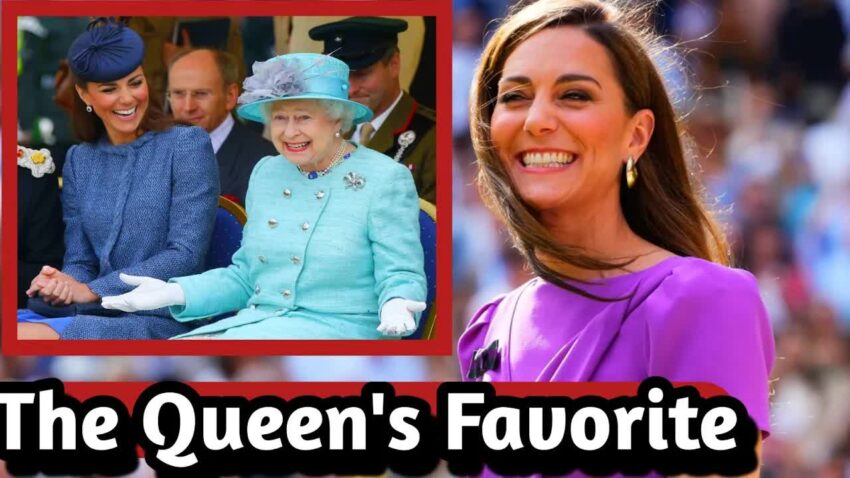The relationship between Queen Elizabeth II and Princess Kate, the Duchess of Cambridge, has blossomed into a remarkable alliance defined by mentorship, mutual respect, and a shared vision for the future of the monarchy.
A moment that encapsulated their bond occurred during a state banquet at Buckingham Palace, where the Queen took a significant step to introduce Kate to prominent international guests.
This act was not merely ceremonial; it was a clear indication of the Queen’s trust in her granddaughter-in-law and a public acknowledgment of Kate’s growing role within the royal family.
Since tying the knot with Prince William in 2011, Kate Middleton has navigated the complexities of royal life with both elegance and determination.
Originating from a common background, she has transformed into a pivotal figure within the monarchy, reshaping how royalty is perceived in contemporary society.
Her fervent advocacy for mental health awareness, early childhood development, and family welfare has garnered immense respect and reinforced the royal family’s connection to modern-day issues.
Despite the relentless scrutiny that comes with her position, Kate’s composed demeanor has won her favor not just with Queen Elizabeth II but also with the general public.
Her ability to maintain grace under pressure has proven invaluable, especially during tumultuous times for the monarchy, such as the highly publicized departure of Prince Harry and Meghan Markle from royal duties.
Queen Elizabeth’s role as a mentor has been crucial in guiding Kate through these challenges.
During pivotal moments, the Queen provided not just advice but also demonstrated her support through meaningful actions.
By introducing Kate at high-profile events, she effectively elevated Kate’s status, signaling that she is ready for more significant responsibilities and affirming her potential as a future Queen Consort.
Their relationship exemplifies a vital theme of intergenerational collaboration within the royal family.
While the Queen embodies tradition and continuity, Kate brings a fresh perspective that is essential for keeping the monarchy relevant in today’s fast-paced world.
This dynamic partnership illustrates how the royal family can adapt to change while honoring its historical roots.
Kate’s initiatives, particularly in mental health and early education, resonate with the Queen’s dedication to duty and tradition.
This blend of old and new not only strengthens the monarchy but also showcases its commitment to addressing contemporary societal challenges.
Moreover, the Queen’s public endorsement of Kate has played a significant role in countering media speculation about rifts within the royal family.
Amidst swirling rumors of discord, their strong connection has emerged as a beacon of unity, reminding the public that the monarchy’s strength lies in its shared values and resilience in the face of adversity.
At the state banquet, the Queen’s gestures went beyond mere protocol; they were a symbolic transfer of leadership responsibilities.
By positioning Kate as a key representative of the royal family, the Queen demonstrated her confidence in Kate’s capability to uphold the institution’s values and duties, a trust built on Kate’s unwavering commitment to her royal responsibilities and charitable endeavors.
As the Duchess of Cambridge continues to redefine her role, her efforts highlight the necessity of harmonizing tradition with modernity.
She has represented the royal family with poise while addressing pressing issues, ensuring that the monarchy remains relevant in an ever-evolving landscape.
This evolving relationship between Queen Elizabeth II and Princess Kate not only enriches the royal narrative but also sets a precedent for future generations.
